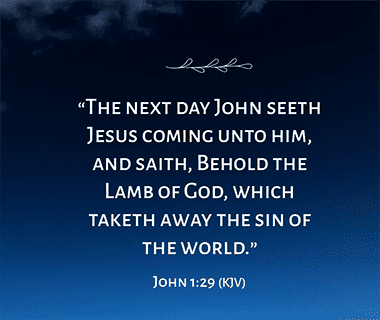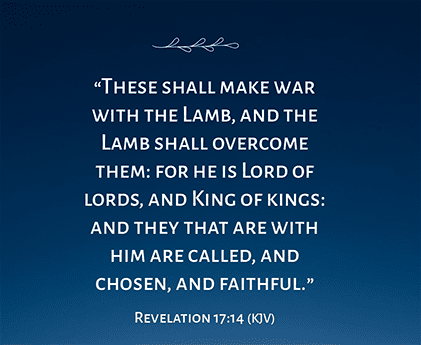
Author’s Prelude: Sometimes, it helps to understand the genesis of an essay to appreciate the full context. Today, God knows that there are many weary Saints still marching but are pretty much out of gas. This composition is to encourage and remind those of their Captain, even the Captain of the Host, who began the great march 2000 years ago. For the soldier, each holiday on the Christian calendar is at risk of becoming just another thing we do…a rerun. They are not! Easter is no exception.
Every spring, Easter is celebrated as a holiday. To some, it is the celebration of new life, a new spring. To others, it’s just a rerun of the previous years’ traditions. To those who truly understand the myth, legend, and reality of the Christ, it is a profound time of introspection, reflection, and renewal of purpose. It is most certainly not a rerun.
As a child, Easter is viewed as a spring holiday. Schools are normally closed, so it was, and is, a welcome week off. A trip to the distant home of a grandparent or maybe grandparents, aunts, uncles, and cousins all meet at your house for a big meal and lots of good times. Perhaps a child’s view is not far off. There are the basic elements of joy, renewed family ties and relationships, the practice of long-standing traditions, and most certainly not a copy or rerun of the preceding year’s activities.
To some, Easter is the time to celebrate the new cycle of life that emerges annually with the daffodils. It is just a convenient time to take a deep breath and get some fresh air to them. Everybody else’s perspective is just tolerated or ignored. Indeed, it is a beautiful time of the year and soothes the natural man’s need to be connected to the world in which he lives. However, vigilance is the order of the day. You see terrible turmoil and other conditions occur in this time frame without regard for human needs or traditions, most certainly not a standard rerun.
Many religions and worldview-specific groups that are not Christian have traditions and practices that coincide with Easter, even some that cohabit. Ironically, the celebration we now call Easter was hijacked by pagans when Christianity was made a state religion in the Roman Empire. Some of the Easter practices were also repurposed. Year in and year out, the same practice on the same relative dates. Routine religious activities are habits without life…yes, reruns. People yearn for more.
Easter Legacy
In the annals of human history, few figures have stirred the hearts and minds of people like Jesus Christ. Revered by billions as the Son of God and the Savior of humanity, Jesus’ life and legacy are enshrined in myth, legend, and historical reality. Titles of Jesus in the Bible point towards the unification of the myth, legend, and reality merging on the Cross of Calvary and in the tomb of the Resurrection. Three would be the Son of Man, the Lamb of God, and the King of Kings.
The title “Son of Man” appears frequently in the Gospels, and Jesus Himself uses it to refer to His mission and identity. In mythological terms, this title evokes the image of a divine being who bridges the gap between heaven and earth. According to ancient Jewish tradition, the “Son of Man” was a messianic figure prophesied to bring salvation and establish God’s kingdom on earth. This archetype resonates with humanity’s age-old yearning for a redeemer who transcends the mundane and ushers in a new era of righteousness.
Legends surrounding the “Son of Man” amplify this mythic dimension. Stories of Jesus performing miracles, healing the sick, and resurrecting the dead have been passed down through generations, imbuing the historical figure with an aura of the supernatural. These legendary accounts serve not only to inspire faith but also to underscore the belief in a divine intervention in human affairs embodied in the person of Jesus Christ.
While myths and legends paint a broad and often symbolic picture, historical reality anchors Jesus in a specific time and place. The title “Lamb of God” is deeply rooted in the historical and cultural context of first-century Judea. This designation reflects Jesus’ role as the sacrificial lamb, an idea central to Jewish Passover traditions. Jesus’ crucifixion is seen as the ultimate sacrifice, fulfilling the prophetic imagery of a lamb led to slaughter for the redemption of mankind’s sins.
Historical records, both biblical and extra-biblical, provide evidence of Jesus’ life and death. Roman historians such as Tacitus and Jewish sources like Josephus corroborate the existence of Jesus and His crucifixion under Pontius Pilate. These accounts lend credence to the historical reality of the “Lamb of God,” whose sacrificial act is commemorated by Christians worldwide through the Eucharist and other sacred rituals.
The interplay between myth and reality in the figure of Jesus is exemplified in the title “Lamb of God.” While the historical facts of Jesus’ crucifixion are well-documented, the theological interpretation of this event is steeped in mythic and symbolic language. The notion of a divine being sacrificing Himself for humanity’s salvation transcends ordinary historical events. It enters the realm of profound spiritual truth.
The title “King of Kings” elevates Jesus to a position of supreme authority and divine rulership. This designation is both a theological assertion and a reflection of the early Christian community’s belief in Jesus’ ultimate sovereignty. In mythic terms, the “King of Kings” echoes ancient narratives of divine kingship, in places gods and demigods rule with absolute power and benevolence.
Legends of Jesus’ post-resurrection appearances and His promise to return as the triumphant ruler further solidify the “King of Kings” imagery. These stories underscore the belief in Jesus’ ongoing presence and ultimate victory over evil. The theological implications of this title are vast, influencing Christian eschatology and the understanding of Christ’s role in the cosmic order.
Historically, Jesus’ proclamation of the Kingdom of God was radical and subversive, challenging the political and religious authorities of His time. The early Christian community’s faith in Jesus as the “King of Kings” provided hope and resilience in the face of persecution and adversity. Eschatologically, this title points to a future reality where Jesus reigns supreme, fulfilling the promises of a new heaven and a new earth.
Christ’s myth, legend, and reality are inextricably interwoven, each aspect enriching the understanding of who Jesus is and what He represents. The titles “Son of Man,” “Lamb of God,” and “King of Kings” encapsulate the multifaceted nature of His identity, drawing from mythological archetypes, legendary narratives, and historical events. Together, they paint a portrait of a figure who transcends time and space, embodying the profound hope and divine mystery at the heart of the Christian faith.
In contemplating the relation of myth, legend, and reality in the life of Christ, one is invited to journey beyond the confines of history and enter a realm where the human and divine converge. In this sacred space, that the enduring legacy of Jesus continues to inspire, challenge, and transform the world. At Easter, the living, dynamic, time of year, people can renew the heritage of a believer and follower of Christ. It is never a rerun.
Feature Image: Lamb in stream GENAI Text to Image; Scripture quotations marked KJV are taken from the KING JAMES VERSION of the Bible.




